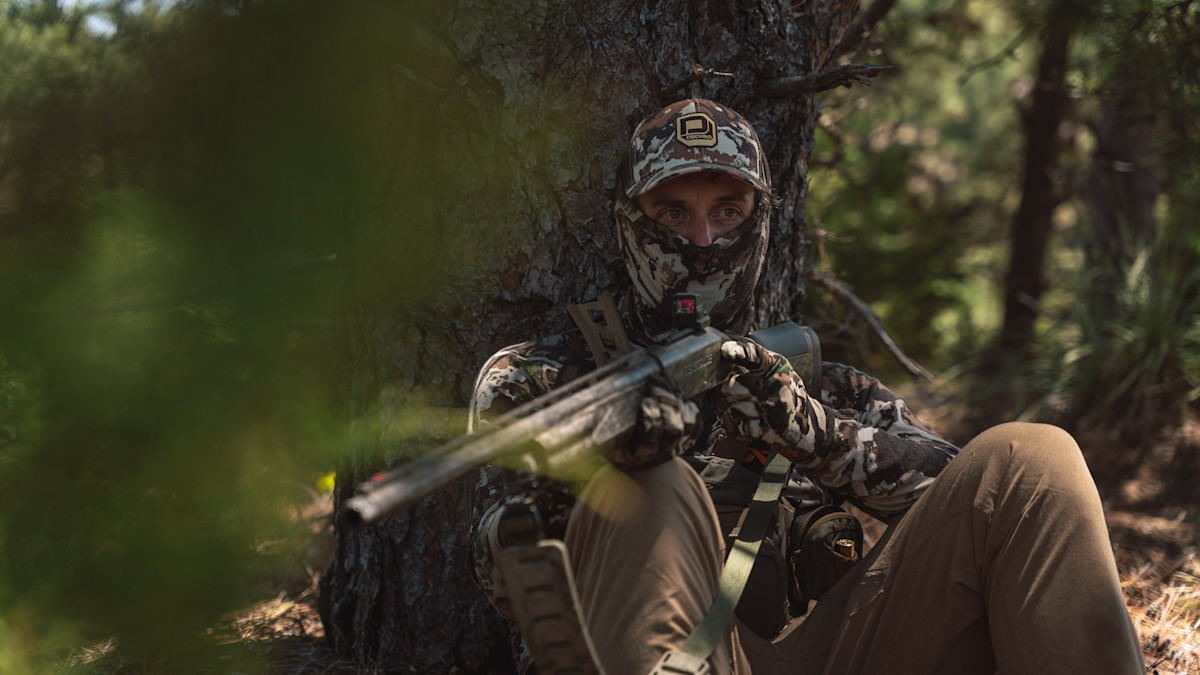
Turkey-hunting shotguns are in a class of their own. Shorter barrels, fancy camo patterns, pistol grips, and custom chokes separate gobbler getters from traditional shotguns you might find in your grandpa’s closet. Red dots belong to this group of turkey-specific accessories, too. While some folks still prefer a bead, red dots are becoming the norm in the turkey woods. After all, if you’re spending over $10 per shell on the hottest TSS loads, you want every shot to count.
I used to possess a bit of skepticism around red dots. I assumed they were overkill or for hunters who wanted to take pokes beyond standard shooting distances. I was wrong. I’ve been hunting with red dots for several years now. Over the years, I’ve missed several turkeys with a traditional bead, but I’ve yet to miss a turkey with a red dot (though I’m sure I just sealed my fate).
Unless I decide to take my grandfather’s Model 12 out of the gun safe, I’ll be hunting with a red dot. Even if you don’t plan on shooting turkeys beyond the 40-yard range, you should still consider running a red dot on your shotgun, especially if you’ve found yourself on a missing streak. While red dots won’t help your turkey calling, they can make you a more efficient shooter. If you’re on the fence, here are three reasons to drop a red dot on your turkey rig.
Easier Target Acquisition
Running a traditional bead is simple, but simple doesn’t always mean easier. You don’t have to worry about battery life, bumping your sight off, or clouded glass with trusty iron sights, but there are some disadvantages to not using an optic. For starters, a traditional bead only allows you to see what’s above it. This becomes problematic when you’re shooting at longer distances, and your bead appears to cover an entire turkey. A red dot or reflex sight allows you to see the whole target and aim for a more accurate point of impact, which is critical when you’re dealing with such a small kill zone.
Red dots also make target acquisition easier. There’s no mistaking the red (or green) dot in your sight’s housing, which makes it easy to track a turkey’s head as it bobs through the timber. And, if you happen to have a gobbler charge in right off the roost, your red dot will provide plenty of brightness in those early hours.
Point of Impact Doesn’t Change
In a perfect world, all shotguns would have a point of impact closely aligned with the placement of the front sight (i.e., the center of your pattern would land exactly where you place your bead). Unfortunately, this isn’t always the case.
With enough practice and familiarity, you can know where to aim your shotgun if its point of impact doesn’t occur dead center. You might remember this when you’re patterning your turkey loads, but an accelerated heartbeat and screaming longbeard might make you forget.
With a red dot, it doesn’t matter where your shotgun’s point of impact lands. You simply sight in your optic so that the center of your pattern aligns with the dot. Once set, it’s as simple as point-and-shoot.
Because most red dots come parallax-free, you don’t have to worry about the dot being off target even if you don’t get all the way down on the gun. Wherever the dot lands, your pattern will go. This isn’t the case with a traditional bead. If you pop your head up just before you shoot, there’s a good chance you’ll miss a turkey high. With a red dot, as long as the sight remains on target, you’re good.
Maximize Your Turkey Load
A red dot, with the right choke and ammo combo, can allow you to put more pellets on paper at further distances for the simple fact that you can see your target better. It’s kind of a no-brainer. Much like investing in one of the best hunting scopes, mounting a red dot on your turkey gun will give you more mileage out of your choke tube and load.
However, I’m not advocating that a red dot and TSS loads will automatically extend your effective range to 60+ yards. While possible with the right choke and ammo, that range requires practice and confidence. But it can give you a surer point of aim for your current effect range, so there’s no doubt when it’s time to pull the trigger.
On the other hand, a red dot can help you avoid those dreaded close-range misses, too. You’ve probably done this or know someone who’s missed a turkey within layup range. Because turkey loads maintain a tighter flight pattern at close distances than others, it’s possible to miss a turkey within 20 yards, even if you’re just slightly off.
For instance, your pattern at 20 yards might be the size of a softball. The chance of missing also increases if your shotgun’s POI isn’t dead center either. While even the best red dots for hunting won’t eliminate flinches, they can mitigate both of these issues by giving you a more precise point of aim.
Last Shot
More technology in the woods doesn’t always equate to better hunting. Most of the time I’d argue just the opposite. Red dots are an exception. Even though they look like they belong in Starship Troopers more than they do turkey woods, red dots provide a tremendous upside for hunters.



